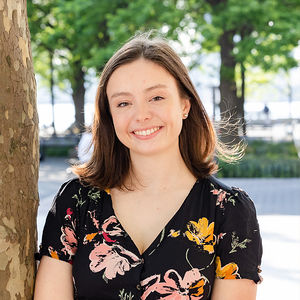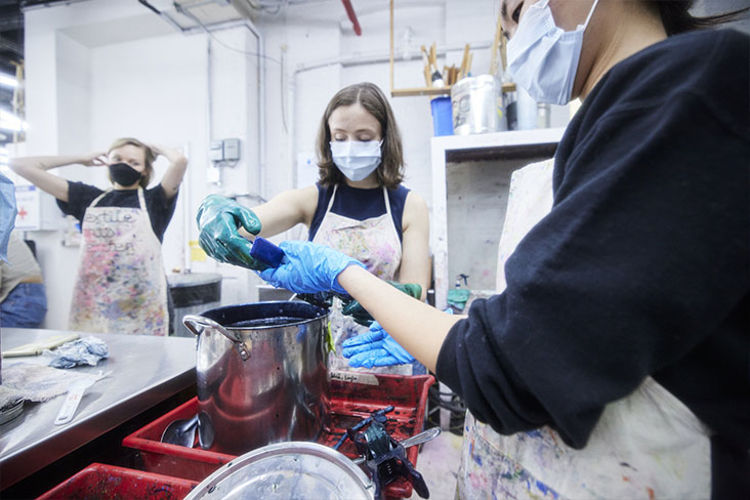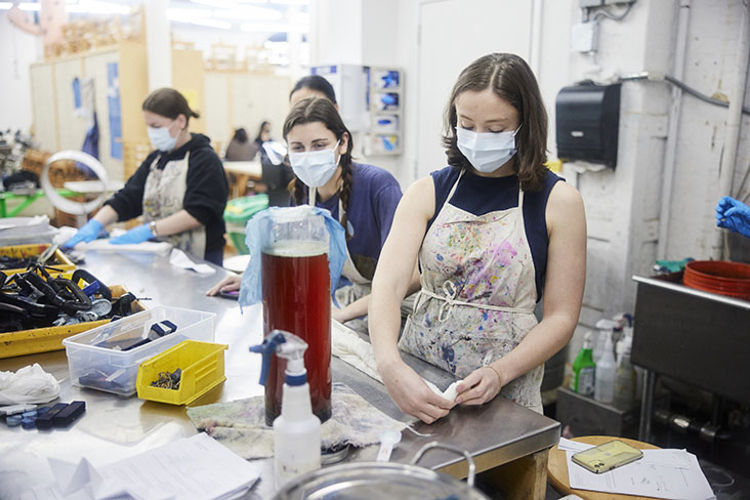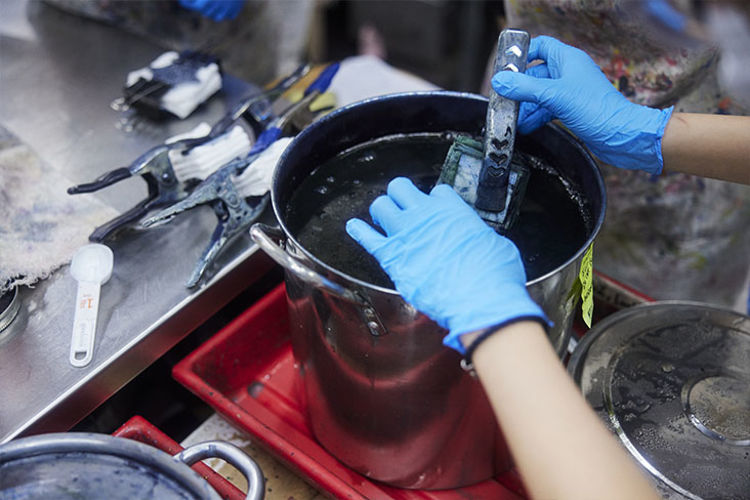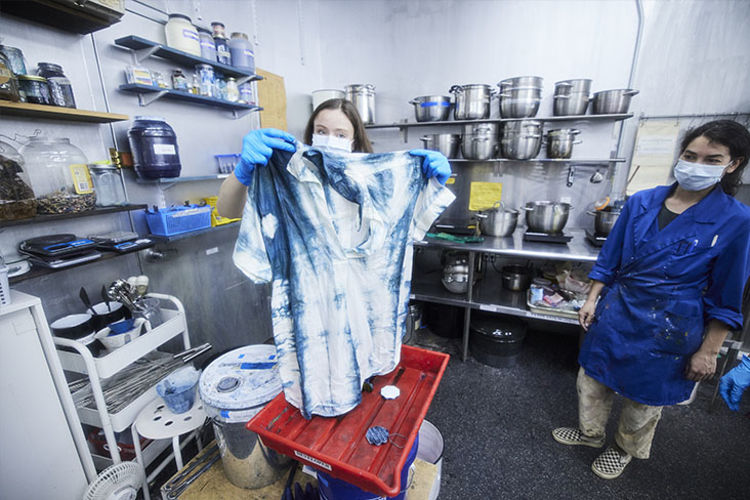In the back of the Textile Arts Center—a space that is equal parts art studio, science laboratory, and fabric shop—a group of Bard Graduate Center students gathered around a tall glass beaker filled with liquid the color of tea left to steep too long. Armored in a paint-stained apron, I wondered where the indigo was; I did not see any sign of the deep blue I was familiar with from my favorite pair of jeans. Then, our dyeing instructor Hannah Schultz performed a magic trick: she dipped a small scrap of white cloth into the brown liquid, and when she removed it a few minutes later and exposed it to the air, it turned a startling shade of blue. I could not fathom how the leafy Isatis tinctoria shrubs I had seen growing on a recent trip to South Carolina could be transformed into a vibrant blue dye. Each Materials Day I have attended—glass blowing and now indigo dyeing—has given me a more nuanced perspective on the objects and materials I use and see every day. The hands-on dyeing process made me more reflective on the precise, scientific knowledge required to successfully dye with indigo and the long history of the pigment.
Schultz began by explaining the process of preparing indigo dye. The dye is made using indigotin, the indigo pigment derived from the plant Indigofera tinctoria, and a combination of a reducing agent and an alkali base. The reducing agent removes all oxygen from the solution, allowing the indigotin, which is insoluble in water, to penetrate the fabric. The solution formed by this process is called a reduction. The dye is ready to use when the indigo pigment changes from a deep blue to a pale green-brown. The textile is then soaked in the reduction. When the fabric is removed and exposed to air, the oxygen reenters the indigo molecule returning the indigotin to its insoluble form. This transformation is visible to the onlooker—slowly turning the textile from a murky green to a bright blue as it dries. Schultz explained that the dyeing process is accumulative; a dyer can create deeper shades of blue by repeatedly soaking the textile.
Schultz then demonstrated several folding and cinching techniques that would produce patterns on our textiles. We were encouraged to try tie-dyeing, a method of folding or pleating the fabric before binding with rubber bands or string. We also attempted shibori, a Japanese technique in which fabric is folded and clamped between two wooden blocks creating white lines of resists along the folds when it is dyed. The tie-dye was forgiving while the shibori required patience and practice. We used paper to learn the precise folding methods that would result in the various blue and white patterns possible with simple shibori techniques: starbursts, stripes, and squares.
Next, we tested our dyeing skills on the clothing we had brought from home. We used two different dye vats made from natural materials based on historic dye practices: organic fructose reduction and an iron mineral reduction. The fructose vat resulted in fabric that was dyed a slightly softer blue while the iron vat produced textiles with a deeper hue. I chose to fold my white shirt with a shibori technique. I carefully laid the fabric out on the table and folded it like an accordion lengthwise. Then, starting at the bottom of the long strip, I folded the fabric into precise squares until it formed a compact cube. Next, I placed two octagonal tiles on either end of the folded fabric and secured them with a large clamp. The tiles are intended to block out the dye leaving a white resist pattern on the shirt. After submerging my project in the indigo vat, I spent ten minutes waiting eagerly while the shirt soaked. After gently removing the shirt from the reduction, careful to not to splash and expose the dye to excess oxygen, I let it sit, folded, for another ten minutes before rinsing the excess dye off with water. Finally, I unfolded my shirt to reveal a blue-and-white octagonal pattern, clearly defined at the top but blurring as it continued down the front. Although not perfect, my shirt is unique and demonstrates the many hours of practice required to successfully dye with indigo and perfect shibori patterns.
Prized for its color and expense, indigo has a long and complex history. Indigenous to tropical climates, it has been used throughout Africa, Asia, Europe, and Central and South America for thousands of years. The brilliant color and the time-consuming process required to produce the pigment made it a sought-after commodity, often used for trade. During the mid-eighteenth century, it became the second largest cash-crop produced by plantations in South Carolina, the immense wealth it generated for plantation owners only made possible through the labor of enslaved people. While visiting a former plantation on a recent trip to Charleston, South Carolina, I saw indigo growing in the fields. The plantation maintained a small crop, along with cotton, to demonstrate what had been grown on the property. It was too early in the season to see the dark purple flowers in bloom, and the small brown shrubs seemed unrelated to the blue dye reductions we used in Brooklyn. As I watched my own shirt transform from a muddy green to the distinctive indigo blue, I couldn’t help but juxtapose the experiences of seeing the growing plant and using the dye. It made me reflect on the little I knew about indigo and its role in the founding of the United States. Although today most indigo used in commercial products is synthetic, the complex legacy of the dye in the United States remains stained by years of exploitation.
Allison Donoghue is a second-year BGC MA student.
